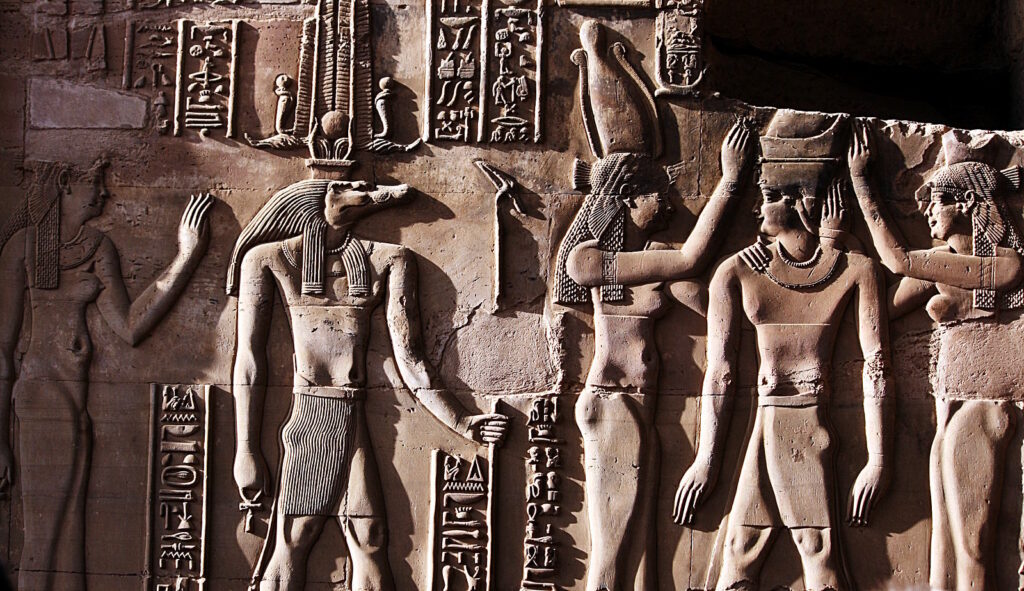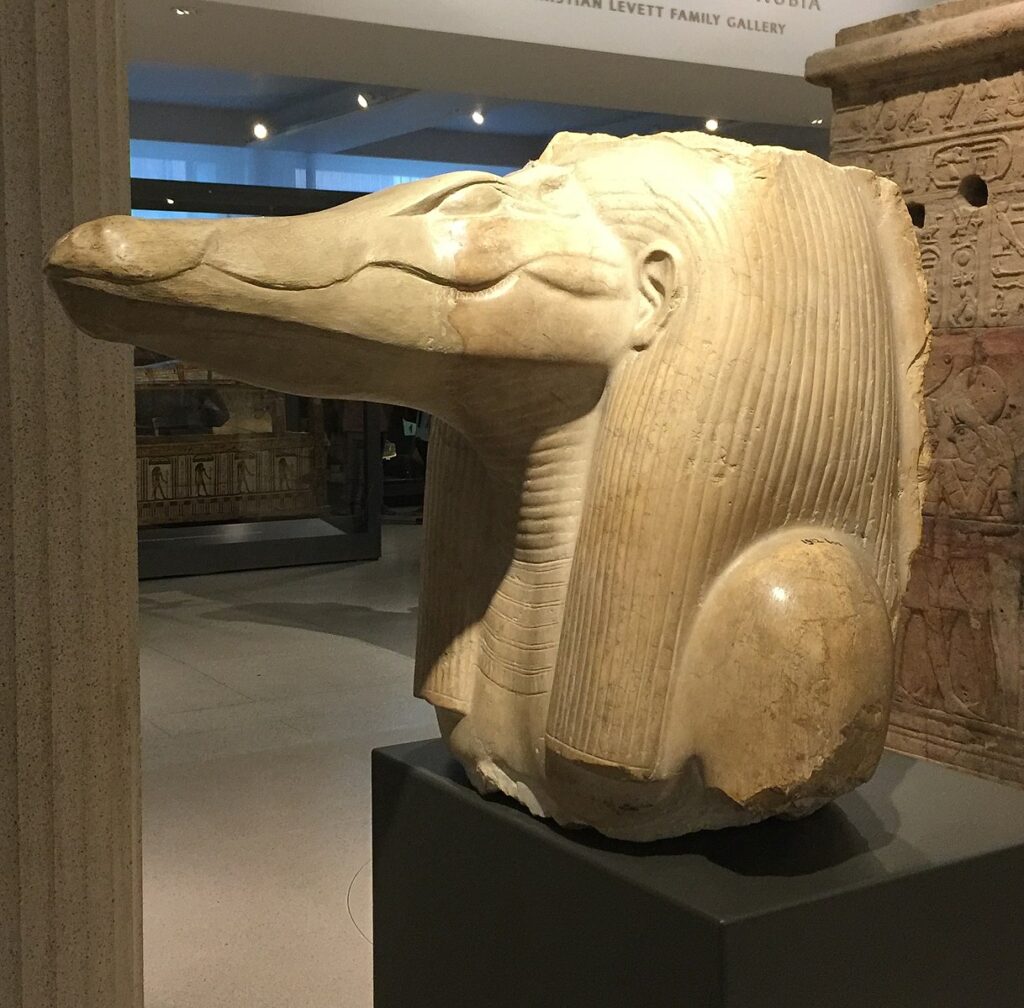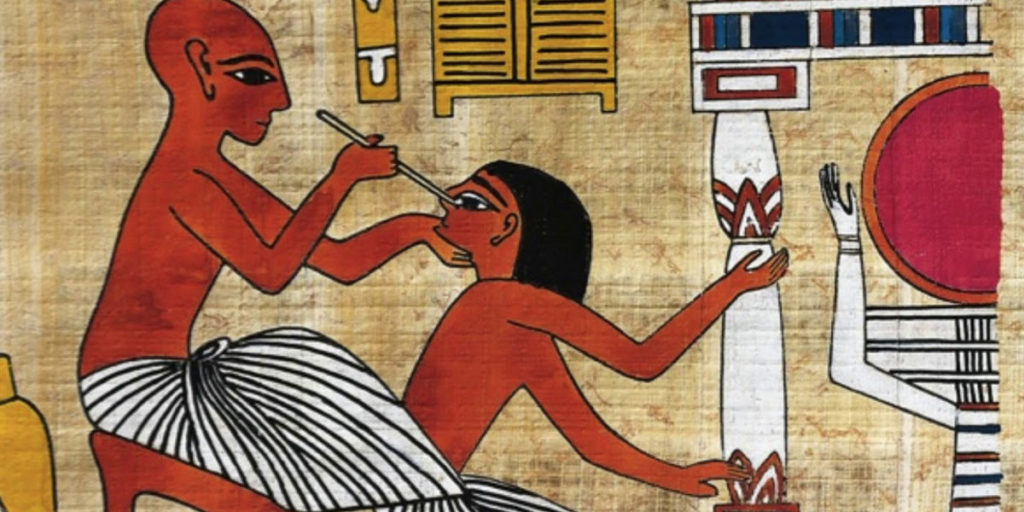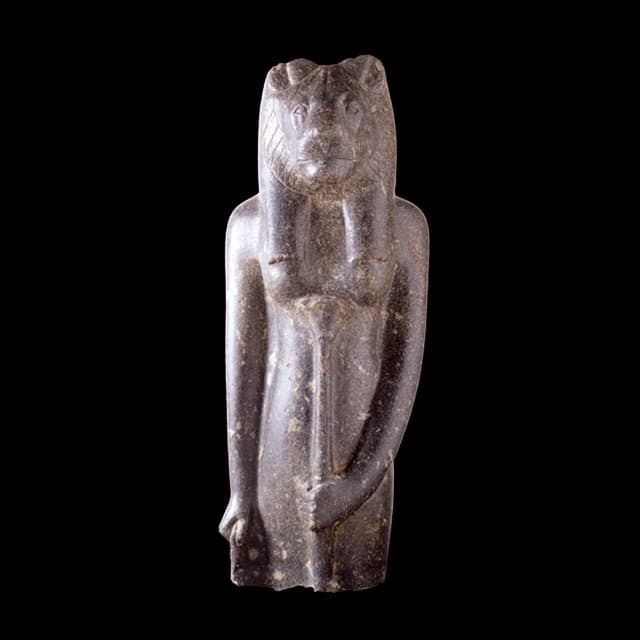In ancient Egypt, the gods could be fickle masters. Drought, death, and disease were often attributed not to natural causes, but to the displeasure of divine beings.
To please the supernatural forces that governed life along the Nile, Egyptians learned to build temples, make sacrifices, and worship these all-powerful deities.
One of the most important of these gods was Sobek, the crocodile god.

Crocodiles in Ancient Egypt
Nile crocodiles are the largest crocodiles in the world, with males reaching up to 15 feet in length. While the Nile provided Egyptians with much-needed resources such as papyrus, fish, and grasses, it also represented a constant risk. Giant crocodiles lurked in the murky waters. If you weren’t paying attention, you could become prey for these hungry reptiles.
That danger meant that it was of the utmost importance to appease these creatures. And there was no better way of doing that than by paying respects to Sobek, the god of the crocodiles. By sacrificing animals and praying in temples, Sobek could be kept satisfied and would keep his creatures in check.
But Sobek was far more than the leader of the crocodiles. Crocodiles were a danger, sure, but they also lived in and around the Nile, which was the lifeblood of ancient Egyptian society. Every year, the river would flood, dumping mineral-rich silt over the parched land, and creating a fertile soil that could sustain a growing agricultural sector.
Thus, Sobek came to represent both the god of the crocodiles and fertility. By praying to Sobek, Egyptians could ensure that the river would continue to flow and that they would continue to be blessed with sustenance.
The Life of Sobek the Crocodile
In the British Museum in London, there is a mummified Nile crocodile that is 3.84 meters long. After it died, it was most likely dried using either sand or a substance called natron, and then wrapped in fine linens.
The more than 25 hatchlings attached to its back were mummified in the same way, preserving each one for eternity. The ancient Egyptians went to great lengths to make sure these creatures were kept intact. This shows just how venerated they were.
Although many crocodiles – along with other animals – were often sacrificed, this particular crocodile was most likely treated lavishly until it finally died of natural causes.
Ancient Egyptians were known to keep crocodiles that they deemed sacred in temples where they were hand-fed honey cakes and meat. They were allowed to roam freely in the temple’s Sacred Lake.
Visitors could come and see these highly pampered crocodiles. They were often adorned in gold and silver jewelry as they crawled around the temple courtyard. When one of these temple crocodiles finally died of natural causes, it would be embalmed. Some temples had hundreds of mummified animals lying underneath their floors.

The Cult of Sobek
The importance that Sobek represented for ancient Egyptians eventually spawned a full-blown cult. By the time of the Middle Kingdom (2030 BC – 1650 BC), there were Sobek cults in 52 different towns throughout Egypt.
Cult worshippers, along with temple priests, did their best to make sure Sobek was worshiped properly. They wanted to ensure that he remained pleased with his human subjects. To maintain this important relationship, they adhered to a strict set of rituals that were followed with utmost diligence.
The daily rituals started in the small, back chamber of the temple, where only the High Priest and the Pharaoh were allowed to enter. Early in the morning, they would enter the chamber and dress the life-size statue of Sobek.
Before doing so, they would remove the clothes that he had worn the prior day. These clothes were of various colors, each with a specific significance. White kept enemies at bay. Blue shielded Sobek’s face from view. Green provided him with good health. Red offered him protection.
Every day, the life-size statue of Sobek was undressed and dressed in these four colors. Once dressed, the priest would back out slowly. He would pick up any offerings that were left and brush his footprints away.
The other part of the ritual occurred in the courtyard where there was a much larger statue of Sobek. This is where commoners could come and leave their votives and pray to the god.
A priest was on hand to serve as an intermediary between worshippers and Sobek. The priest listened to the prayers of the supplicants and then interpreted Sobek’s response to them.
Before approaching the statue of Sobek, each worshiper had to purify themselves by anointing their bodies with oil and bathing in the Sacred Lake located in the courtyard. Sometimes worshipers stayed the night in the presence of Sobek. In the morning, they would recount any dreams they had to the priest who would then offer them guidance.
Although the cult of Sobek reached its peak popularity during the period of the Middle Kingdom, it nevertheless persisted for millennia. During the Ptolemaic period (180 BC to 47 AD), one of the most famous temples to Sobek was constructed – the temple of Kom Ombo.
It took about one hundred years for the building to be fully completed, but the result was one of the most fascinating buildings in all of Egypt. It is built in honor of not one, but two Egyptian gods – Sobek and Haroeris, the falcon-headed god of the sky.
The temple is built with Sobek’s portion on the eastern side and Haroeris’ side portion on the western side. It was in this temple that archeologists discovered the 3.84-meter-long crocodile that ended up in the British Museum.
Now, tourists can go and visit the Kom Ombom and walk through the antechambers and halls that once held so much religious significance. Most of the original stone walls and floors are no longer standing, but the structure has since been restored by archeologists.
You can even see the inner sanctuaries which only the high priests were allowed to enter. The only thing missing is a live crocodile wandering around, but maybe that’s for the best.

